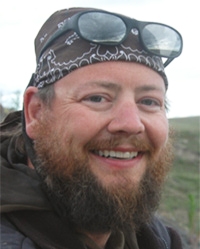Presenter
Dr. Peter Flaig
Research Associate, Bureau of Economic Geology
Abstract
Integrating sedimentology, ichnology, and high-resolution imagery in outcrop-subsurface investigations of ancient paralic/deltaic successions improves our ability to accurately predict the paleo environment and position within a depositional system over time and space. This integrated technique helps clarify the relative forcings, such as fluvial floods, waves, and tides that control the deposition of sand and mud and affect sandbody-shale geometries. Variations in salinities related to changing controls and sub-environments as well as key flooding surfaces can also be identified. Several examples from current research are provided that highlight the value of combining these techniques in studies of shallow marine clastic systems. Examples from Cretaceous strata deposited along the shoreline of the ancient Western Interior Seaway include a mixed fluvial-flood dominated to tidally modified delta in the Loyd Formation and tidally modified shallow marine deposits of the Sego Formation found along the Rangely Anticline, CO. Estuarine deposits of the Neslen Fm in the Book Cliffs of UT are also examined. The implications for modeling these reservoir analogues, and predictions of reservoir quality are discussed.
